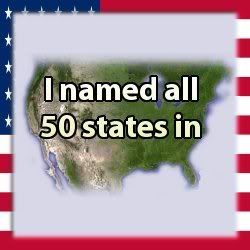It’s all out there on the Web.
I was going to write about the Levushei S’rad’s explanation why we (Ashkenazim and Nusach Sfard-Chasidim) say the Hoshanot according to a chart, rather than in the order printed, but I find that it’s already clearly explained at Chabura.net. The order may seem confusing, but it’s textually quite logical once explained.
Note that the Lubavitchers do say them in the order printed in the siddurim (with an exception for Shabbat).
Those who follow the custom of the Vilna Gaon do not say hoshanot at all on Shabbat. Hoshanot are connected inextricably with the Four Species, and since we do not take the Lulav on Shabbat, Hoshanot are irrelevant. Good thing I brought a regular Israeli machzor to shul on Shabbat as well as the Siddur Eizor Eliyahu (a terrific Nusach-haGra siddur with extensive footnotes on the textual history of Nusach Ashkenaz).
And then there’s the Christian expression “Hosanna”, which clearly comes from Hoshana. It’s not clear how the NT transmogrified “Hosha-na” meaning “Save [us] please” into a self-contained idea (ωσαννα εν τοις υψιστοις, Hosanna in the highest). Nor is it clear how the authors of the NT fell into a textual time-warp. Hoshana is a poem-cycle recited on Sukkot, commemorating the circuits of the Altar mentioned in Mishnah Sukkah 4:2, when they would pray “Please save us” while walking around the Altar with the Four Species. Yet, the NT has people saying “Hosanna, hosanna” when Jesis came to Jerusalem, shortly before Passover, six months away. The usual understanding is that the NT authors were unfamiliar with Jewish practice. But my friend Zev Sero has constructed an interesting story that might explain it.
See, there’s always the question what to do with the lulav and ethrog after Sukkot is over. They’ve been used for a mitzvah act, they have become holy through use, you really don’t want to just throw them away. So many people keep them until they rot, then get rid of them. Sometimes they don’t rot, but just dry up. I’ve got various tiny dried citrons (ethrogim) around the house.
Anyway, there are some traditions what to do. The Hoshana, the willow bundle used on Hoshana Rabbah to pray for rain (yes, it looks like sympathetic magic, but it was invented by the Prophets, so it can’t be syncretistic), should be burned with the Chametz just before Pesach. And the Lulav is to be used as fuel to bake the Matzot for Pesach. Or is it the other way around? I don’t remember – maybe the Web will tell me.
In fact, according to Rabbai David Golinkin, the minhag is different in different areas:
Using the Lulav to Burn the Hametz or to Bake Matzah
In two places in the Babylonian Talmud (Berakhot 39b and Shabbat 117b), we are told that when Rav Ami and Rav Assi happened to come upon a loaf of bread which had been used for an Eruv3 they would recite hamotzi over the loaf. They said: “Since one mitzvah was done with this loaf, let us do another”. These passages became the basis for reusing items which had been used to fulfill one mitzvah in order to perform another mitzvah.4
R. Yehudah ben Kalonymus (Ashkenaz, twelfth century) used to save the aravot (willows) from the lulav in order to burn the hametz, basing himself on the above passage, and this custom was recorded in all of the classic custom books of Ashkenaz.5 In modern times, Iraqi Jews used the aravot from Hoshana Rabbah.6
In Yemen, on the other hand, it was the custom to use the lulav, hadassim and aravot as fuel for the oven when baking matzah shemurah.7 Finally, the Jews of Syria, Morocco and Baghdad used the lulav both for burning the hametz and for baking matzah.8
3. Either Eruv Hatzerot (Rashi to Berakhot and Shabbat ibid.) or Eruv Tavshilin (Meiri to Berakhot ibid.). For an explanation of these terms, see EJ, Vol. 6, cols. 849-850.
4. For other examples not related to Pesah, see R. Hayyim Wiener, The Responsa of the Va'ad Halakhah of the Rabbinical Assembly of Israel , Vol. 4 (5750-5752), p. 70 and note 33 (also available at www.responsafortoday.com).
5. Horev 10 (1948), p. 159; Sefer Minhagim d'vey Maharam Mirotenberg , ed. Elfenbein, New York, 1938, p. 68; Sefer Minhagim L'rabeinu Avraham Kloizner , ed. Dissin, Jerusalem, 1978, p. 55, par. 13; Hagahot Maimoniot to Hilkhot Sukkah 7:26, par. 1; Darkhey Moshe Ha'arokh L'orah Hayyim 664 (end) and the Rema in Orah Hayyim 664:9; Minhagey Maharil , ed. Spitzer, Jerusalem, 1989, p. 377, par. 9.
6. Asher Wassertil, ed., Yalkut Minhagim, third edition, Jerusalem, 1996, p. 176.
7. R. Yosef Kafah, Halikhot Teiman, Jerusalem , 1960, p. 34 and Yehuda Ratzhabi, B'ma'agalot Teiman , Tel Aviv, 1988, p. 218.
8. Herbert Dobrinsky, A Treasury of Sephardic Laws and Customs, New York, 1986, pp. 352, 358, and Kaf Hahayyim to Orah Hayyim 664:60.
Be that as it may, Sero theorizes that it was Pesach time, and just as I and others are confused which should be used for matzah, and which for burning Chametz, so too were many of the then pilgrims coming to Jerusalem for the festival. In fact, some were talking by the side of the road, wondering, “Hoshana? Lulav? Hoshana?”, when they noticed “Here comes this rabbi on a donkey, let’s ask him. Which for chametz, which for matzah, Hoshana? Lulav?” And some ignorant observers saw, and transmitted it to the NT authors that people were saying “Hosanna” as Jesis came up to Jerusalem.
And thus we can save the phenomena. Mo`adim lesimhhah, everybody.

